- Home
- Jessie Haas
Saige
Saige Read online
For Jo McNeil.
Love you, miss you.
Title Page
Dedication
Chapter 1: Ten Thousand Hours
Chapter 2: A Dose of Horse
Chapter 3: Singing Off-Key
Chapter 4: Letter to the PTA
Chapter 5: The World Upside Down
Chapter 6: A Good-Luck Charm
Chapter 7: Click, Treat
Chapter 8: Professor Picasso
Chapter 9: Painter’s Block
Chapter 10: The Fiesta
About the Author
Acknowledgments
Letter from American Girl
Real Girl, Real Story
Preview of Saige Paints the Sky
Copyright
“Saige! Hurry!” Mom called from the front step.
“Sam! Hurry!” I echoed from halfway up the street. I tugged on the leash, but my dog, Sam, a shaggy black-and-white Border collie mix, ignored me. He was too busy sniffing a telephone pole, reading the message left by some other dog. You can’t hurry that.
I turned in a circle, seeing tan stucco houses, the color of adobe. A few tall cottonwood trees stood behind them. The dry brown lawns were just starting to green up from the August rains. Off to the east, the Sandia Mountains were bluish gray under the rising sun, and everything else was dust-colored—unless you looked up.
I did, at the huge, deep, brilliant blue sky. New Mexico has so much sky, it makes everything else seem tiny. A yellow hot-air balloon drifted overhead, the perfect accent.
Albuquerque is the hot-air balloon capital of the world. We’re known for the Albuquerque International Balloon Fiesta, which happens every year in October. Hundreds of balloons participate, and thousands of people watch. But balloons fly here nearly all year, especially in the mornings. My dad flies one. He’s a commercial airplane pilot and a certified balloon pilot—and fanatic.
“C’mon, Sam, let’s go!” I urged, running for home with Sam racing alongside me. We burst into the kitchen just as the toast popped up.
Mom slathered a couple of pieces of toast with peanut butter and mesquite honey and dished out the eggs. Then we sat down together, just us two. Dad had left a couple of hours ago. He usually eats breakfast at the airport.
Mom propped her chin on one hand as she ate. Her springy red hair wasn’t combed yet, and her eyelids hung heavy. Mornings aren’t Mom’s thing, but I felt sparkly and alive.
“First day of school,” I told Sam as he parked himself next to my chair. His ears flattened. He knows lots of words, and “school” isn’t a favorite. It means I’ll be leaving the house soon.
“Looking forward to fourth grade?” Mom asked.
“Yes!” I answered, toast crumbs spraying. “I can’t wait to see Tessa!”
“And learn?” Mom suggested. She teaches math at the university, so learning is big for her. I took a bite of my eggs so that I didn’t have to answer. I do like learning, but sometimes school can make even interesting things seem boring. There’s a good part, though—Miss Fane’s art class. Remembering that, I chewed faster.
Sam stared at me with his power gaze, the one that’s supposed to put sheep into an obedient trance. Toast, he commanded silently. Toast. I broke off a corner and tossed it to him. Gulp. The gaze immediately resumed.
Sam and I shared the last bite of toast, and then I went to brush my teeth. I glanced at my hair in the mirror. It’s long and auburn, and I’d done it in a loose side braid. It looked good, I thought, and showed off the silver earrings Mom had given me.
After pulling on my red knit sweater, I was fed and dressed—almost ready for school. Now, supplies. I unzipped the side pocket of my backpack and turned to my art table.
Colored pencils. Did I need my colored pencils?
Sure. You never know when you’re going to need some yellow or turquoise in your life.
Double-ended felt-tipped brush-pen?
Well, duh! It is the best drawing implement on the planet.
Except for a nice sharp No. 2 pencil. Better grab a couple of those, and my tiny metal pencil sharpener.
“Saige! Bus!” my mom called.
The bus roared past the house. Not a problem—I don’t ride the bus, but it’s my signal to get moving. I struggled to close the side pocket of my backpack. Maybe I’d gone overboard with the pens and pencils, but you can never have too many things to draw with, right?
I heaved the backpack onto my shoulders and plunged through the kitchen, planting a flying kiss on Mom’s cheek—so fast that it was almost a head-butt. Then I gave Sam’s head a quick pat. “See you this afternoon,” I promised him.
“Have fun!” Mom called to my back. “Learn a lot—”
The door banged shut behind me. I peeled down our front path. The morning air was nice and cool, but that wouldn’t last long today. School starts in mid-August in Albuquerque, and New Mexican summers are hot.
The bus had stopped down the street, at the house where I’d seen a moving van this past weekend. A family with kids must have moved in. Little kids? Big kids? Boys? Girls?
Whoever they were, they were already on the bus. It pulled away as I turned down Mesa Road and poured on the speed, my pack slapping heavily against my back. This wasn’t the best-ever outfit for running. My feet were slipping in my new red sandals, and I could feel my braid loosening.
I sprinted past the yard with the desert landscaping, past the big backyard with the burros. I rounded the next corner and ran across the soccer field. Up ahead, the bus pulled into the school driveway. I reached the bus door, panting, as the first kid got off.
In a moment Tessa came down the steps. She wore a green T-shirt with a treble clef on the front—like a backward S with a line down the middle. Her wavy blonde hair spilled onto her shoulders, and she was wearing her dangly earrings that I love. They’re made of tiny beads that jingle when she turns her head or laughs.
“Hi!” I said, grinning broadly.
“Saige!” Tessa said back, smiling our special smile—pressing her lips together and squeezing her eyes almost shut. I invented the smile, imitating how a cat beams. Tessa has wide cheekbones, and her short nose tips up a little. When she beams, she really does look like a Persian cat.
“How was music camp?” I asked.
“It was awesome!” she declared. “We sang for four hours a day! I learned a ton about breath control and how to project my voice into my mask…”
There was more, but I didn’t understand half of it—I mean, really didn’t understand. It was like she was speaking another language.
“Where are the new kids?” I asked, changing the subject. “I saw the bus stop at the house on our street that just sold.”
Tessa pointed at the sidewalk ahead. A skinny dark-haired girl walked all alone toward the front doors of the school. Her backpack wasn’t especially big, but it looked like it was weighing her down.
Tessa and I followed the new girl through the doors and into the hallway. Blank beige walls and lockers stretched as far as the eye could see. Last year the walls were lined with our artwork: cactus drawings; foil pierced to look like Spanish tinwork; paintings of the brilliant pink Sandia Mountains at sunset; and balloons, balloons, balloons. The art went home with us at the end of last year and left the walls bare, an empty desert.
“I can’t wait till the new artwork starts to go up,” I said, quickening my step.
Tessa gave me a pitying look. “Saige, don’t be such a space cadet,” she teased. “We don’t have art this year. We have music!”
I stared at her, suddenly feeling crushed. How could I have forgotten something this bad, even for a minute? In Albuquerque, public elementary schools have an art teacher one year and a music teacher the next—never both at the same time. The school sy
stem can’t afford it.
“Sorry,” Tessa said, giving me a quick cat smile. “But does it really matter? You paint every afternoon with Mimi. Anyway, we do get to have music.”
Mimi is my grandma. Her real name is Miriam, but everyone calls her “Mimi,” and she’s a pretty well-known artist in our community. Tessa was right: I do paint with my artist-grandmother almost every day. And we do get music this year, and music is fun.
But my backpack was full of drawing pencils and pens.
And I had new drawings to show Miss Fane, the art teacher.
And there’s nothing about school that I love as much as art. I love being a star, the one who can draw horses that really look like horses. I love learning new techniques—and following my own creative ideas, too.
Tessa looked miffed. “Well, I’m happy about music class,” she said.
Tessa is my best friend, so I should have been happy for her. She loves music the way that I love art. I should have said, “Yay! Music!”
But I couldn’t make myself feel happy, even for Tessa, and I certainly couldn’t make myself smile. I’d gone from sparkly to depressed in two seconds flat.
Ahead of us, the new girl had stopped walking and was glancing back at us. Her skin was the color of coffee with lots of milk, her eyes wide and dark.
“Excuse me,” she said. “Did you just say we don’t get art this year?”
Tessa and I nodded.
The girl’s eyes filled with tears. “We didn’t have it last year at my old school,” she said softly.
I had to look away from her in case I started to cry, too. That meant looking at the blank wall. Usually there’s nothing I love more than a blank canvas or an empty sheet of white paper, waiting for me to do something wonderful to it.
But these walls weren’t like that. They were just dull, and without art, they were probably going to stay that way. I couldn’t stand looking at them a second longer.
I turned back toward the new girl. “What’s your name?” I asked.
“Gabi Peña,” she said shyly. “I’m in fourth grade—Mrs. Applegate’s room.”
“Us, too!” Tessa said. “We’ll show you where it is. Where are you from?”
Gabi and her family had moved from the South Valley, she told us as we walked. She had a four-year-old brother and a baby sister.
“Do you have any pets?” I asked.
Gabi’s eyes filled with tears again. “Our dog died last month,” she said sadly. “Mom doesn’t want to get another one till we’re settled in.”
I felt terrible for bringing up another upsetting topic. I was glad when Gabi blinked back her tears and pinned on a braver look. “You have a dog, right?” she asked. “I saw you walking him last night.”
I told Gabi about Sam as we walked together into our new homeroom. It was set up with big tables, four chairs at each. A few kids were there already, including Dylan Patterson at the front table.
Dylan is tall and brown-haired, and I noticed that she was wearing the same green music-camp shirt that Tessa was wearing.
“Over here, Tessa!” Dylan called. “I got us a table.”
Us? When did Dylan and Tessa become “us”? Tessa and I were us.
“Saige, you can sit with us, too,” said Dylan, pointing toward another chair at the table. I suddenly remembered how bossy she could be.
I was going to keep walking, but Tessa seemed to be going along with all of this. “C’mon, Gabi,” said Tessa. “We can sit at the same table.” She plopped down beside Dylan, and they both started talking about music.
“That last lesson was the best,” Dylan said. “Making the inside of your mouth like a cathedral! And rubber corks in the hinge of your jaw—”
“I know,” Tessa interrupted, nodding her head vigorously as if what Dylan had said made perfect sense.
For a second I felt a pinch of jealousy. Dylan’s okay, but she isn’t one of us. There are only two of us.
Tessa and Dylan were acting like best buddies, though. Clearly Tessa’d had a great time at music camp, and Dylan had shared it with her.
But summer was over now. We were back in school, and Tessa and I would have as much fun together as we always did—well, almost as much fun. It was still hard to think about a year without art.
Mrs. Applegate took attendance and then got started with our first subject, history.
Right away I could tell that fourth grade was going to be harder than third. There would be more homework, Mrs. Applegate told us, and we’d be doing research reports. She didn’t call them “hard.” She called them “more sophisticated.” I knew what that meant, though.
At lunch, Tessa told me more—lots more—about what she had learned at music camp. “Do you know how much practice it takes to get really, really good at something?” she asked. “Ten thousand hours! To become a soloist or a virtuoso, it takes ten thousand hours of practice.”
“Not that you’re counting,” I joked.
Tessa didn’t laugh. “I am counting!” she said, glancing at Dylan. “Dylan and I made a pact. We’ve already put in five hours each since camp ended.”
“Only nine thousand, nine hundred and ninety-five hours to go,” I said.
It was a good line—and good math—but it was a horrifying idea. If Tessa really believed this, when was she going to find any time to have fun with me? And without art class, how was I going to get ten thousand hours doing what I loved? I couldn’t wait for the school day to end so that I could take my troubles to Mimi.
My grandmother lives out where neighborhoods give way to little ranchitas and orchards. It’s almost the last stop on the school-bus route.
I walked up the driveway under white, baking sunlight and stepped under the huge old cottonwood trees into a different world. It was cooler here. Green and yellow light filtered through shifting layers of leaves. From high above me, I heard birdsong. Beneath the trees, glossy black chickens with chalk-white faces scratched in the dirt, chortling and shaking their bright red combs.
“Hello!” I called toward the house. Mimi’s dog, Rembrandt, woofed in answer. His voice sounds just like Sam’s, because they’re brothers, two black-and-white Border collie mixes.
A moment later Mimi appeared at the doorway of the adobe ranch house, sweeping a wide-brimmed hat off her head. Her smile was a slice of white in her tanned face. She wore jeans and rawhide chaps—she must have been working a horse. “Good!” she said. That’s what Mimi always says when she sees me: Good!
“Not good,” I said. “We don’t have art this year!”
“Is that right?” Mimi asked, twisting her thick gray hair up into a bun. She glanced under her arm at me. “Did we know that was coming? I can’t remember.”
“I guess I knew,” I admitted, “but I forgot.”
Mimi took off her glasses and wiped away the dust. “Well, let’s solve this over a cold glass of lemonade, shall we?” she said, waving me inside.
I followed her into the cool house. In the dim light, the large paintings and brilliant fabrics draping the furniture almost glowed. Mimi’s house was so interesting and colorful, the exact opposite of school.
Mimi got out two heavy glasses, filled them from the jug in the refrigerator, and led the way to the studio. It was the first time I’d been in the studio in almost three weeks, but nothing had changed. Two easels faced the big window that looked out over the horse pasture and the Sandia Mountains. Adjustable lamps leaned over the drafting table, as if peeking at the artwork and the collection of jars bristling with brushes. And in the corner was the comfy old sofa, covered with red, gray, and black Navajo saddle blankets.
The pasture and mountains beyond the window were where things changed. The horses might be out there, or they might not. The Sandias might be bluish gray, like this morning, or cool pink, like this afternoon, or that astonishingly vivid watermelon pink that gives them their name. Sandia means watermelon.
Mimi’s easel held a blank canvas with photos of her horses pinned above it
. There was light-gray Picasso, bay Georgia, the little brown yearling named Jackson, big-bellied Mama Frida, dappled Laurel, and palomino Berthe. All of Mimi’s animals are named after artists, including Rembrandt—and my dog, Sam, too. He’s named after Sam Savitt, who is famous for his horse paintings and who also wrote my favorite how-to art book.
As I sipped my lemonade, I heard a bark and the scrabble of claws on the floor. A fluffy kitten raced into the studio half an inch ahead of Rembrandt. She leaped onto the sofa next to me and arched her back at him.
“When did you get a kitten?” I asked as Rembrandt crouched, staring at the kitten the way Sam had stared at my toast.
Mimi said, “Somebody dumped her off about a week ago. I heard a car drive off, and fifteen minutes later she was on the doorstep. Rembrandt likes her, but the last thing I need in the studio is a kitten, knocking things down and getting hair on the paintings.”
The kitten scrambled onto the sofa back and beamed at me, purring. She looked just like Tessa, except Tessa doesn’t have a fuzzy face, half white and half gray, divided by a straight line down the middle of her nose.
“She’s so cute!” I exclaimed, scratching the kitten’s head.
When I looked up, Mimi was watching me thoughtfully.
“So, no art this year,” she said. “Do you want to try to do something about it?”
I stared at Mimi. Do something—other than just moping? “Like what?” I asked.
“Get the PTA to help with the arts fiesta,” Mimi said promptly.
Mimi and her Oil Painters Society were planning a neighborhood fiesta to raise money for arts in the community. The paintings on our easels were going into the silent auction, if we finished them in time, and I’d agreed to teach kids how to draw horses at the fiesta. So I was helping already, but Mimi seemed to think we could do more—which was pretty typical of her.
Mimi said, “Maybe we could have volunteers teach after-school art classes during the off years, when your school doesn’t have an art teacher. We would need supplies, and we’d probably need to pay a regular teacher or two to stay and supervise. The money we raise can help with that, but if the PTA joins us, we can raise more money.”

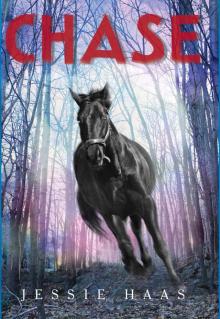 Chase
Chase The Sixth Sense
The Sixth Sense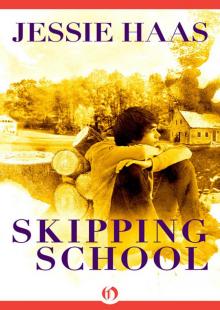 Skipping School
Skipping School Keeping Barney
Keeping Barney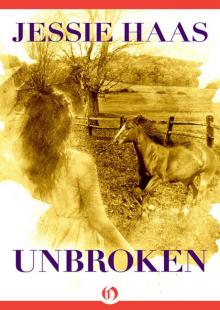 Unbroken
Unbroken Westminster West
Westminster West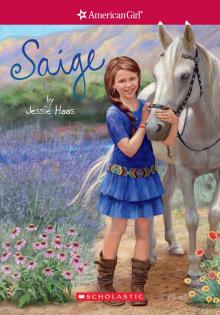 Saige
Saige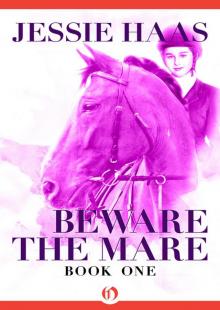 Beware the Mare
Beware the Mare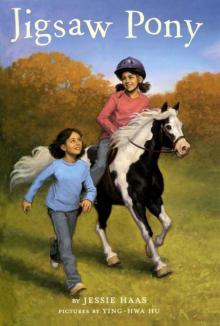 Jigsaw Pony
Jigsaw Pony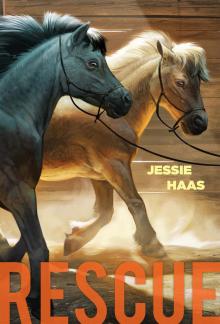 Rescue
Rescue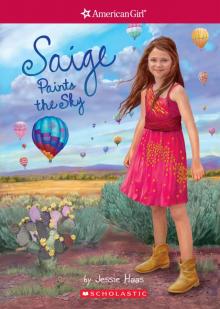 Saige Paints the Sky
Saige Paints the Sky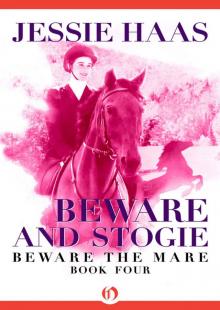 Beware and Stogie
Beware and Stogie Chico's Challenge
Chico's Challenge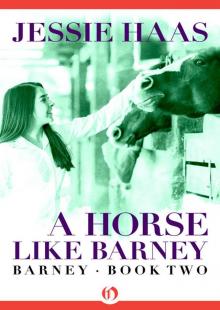 A Horse like Barney
A Horse like Barney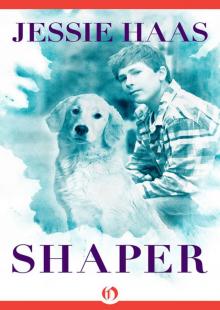 Shaper
Shaper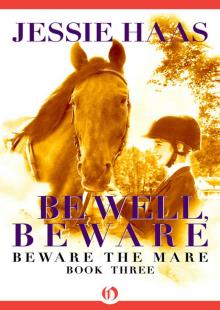 Be Well, Beware
Be Well, Beware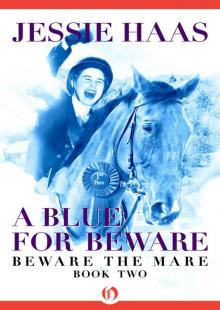 A Blue for Beware
A Blue for Beware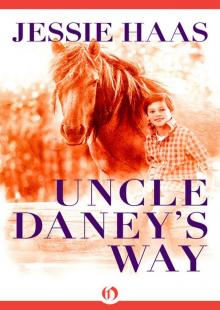 Uncle Daney's Way
Uncle Daney's Way